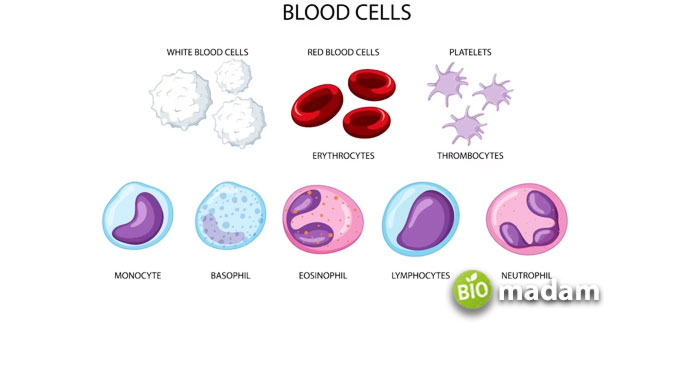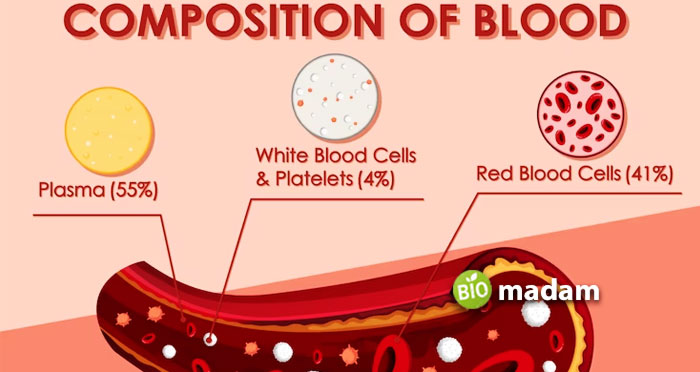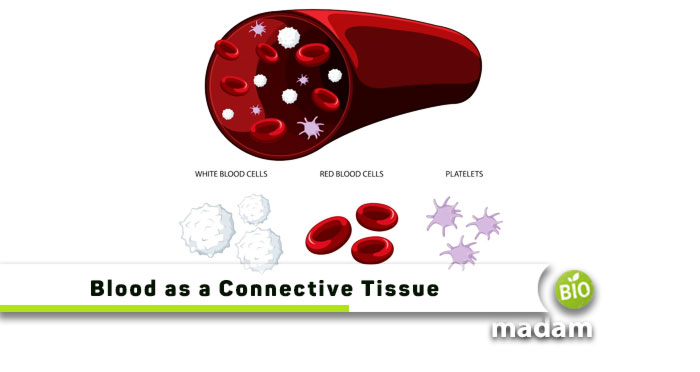Every living thing needs something to live off, just like food. But before even getting to the food, there is another component of our body necessary to survive and that is none other than the blood. Any living body possessing a circulatory system has blood. The heart pumps blood through the circulatory system to supply it to the whole body. Blood is a type of connective tissue as it connects and supports different body systems. Connective tissue consists of cells scattered throughout the extracellular matrix. It also plays a role in providing internal support. Blood also has more or less the same functions as connective tissue. Here, you will discover more about this important component of the body, its composition, and its functions.
What is Blood?
Blood is a fluid connective tissue found in the circulatory system of the body. This fluid flows throughout the body, connecting different systems, and providing nutrients and oxygen to every part of the body. Blood takes the waste, such as carbon dioxide away from all the body cells. Blood is composed of plasma, blood cells, and platelets. 8% of our body weight is blood. An average adult has 5-6 liters of blood in their body.

Functions of Blood Connective Tissue
Being the most important component of the body, blood plays a key role in conducting major functions of the body. Go through the following points to learn all the functions of blood connective tissue.
Acts as a Fluid Connective Tissue
Blood is composed of 55% plasma and 45% other components. These components, including platelets, white blood cells, and red blood cells are suspended in the plasma. Plasma is the fluid found in the blood. Thus, blood is considered a fluid connective tissue. It is responsible for connecting and supporting different systems of the body.
Responsible for Homeostasis
Blood is responsible for homeostasis. It maintains the body temperature according to the body’s needs. It absorbs or releases heat depending upon the demand of the body.
Transports Oxygen and Carbon Dioxide
The most important function of blood connective tissue is to absorb oxygen from the lungs, and then provide it to all body cells. In turn, blood takes the waste carbon dioxide from the body cells and transports it to the lungs from where it is exhaled.
Transports Nutrients and Hormones
Blood connective tissue absorbs the digested nutrients such as glucose, proteins, vitamins, and minerals from the small intestine, and transports it to the rest of the body. Blood also transports the hormones secreted by endocrine glands to all the organs in the body.
Provides Protection
Blood connective tissue contains different types of white blood cells. These different types of white blood cells protect the body from harmful pathogens such as bacteria, viruses, and other parasites.
Transports Waste
Blood goes to the kidney and liver where it is filtered. All the toxins and nitrogenous waste is removed from the blood plasma in the kidney and liver.
Helps in Forming Clots
Platelets are an important component of the blood, playing a role in forming clots at the wound site in case of an injury.

Composition of Blood
| Component | Percentage Found in Blood |
| Plasma | 55% |
| Red Blood Cells | 40-45% |
| White Blood Cells | 1% |
| Platelets | Less than 1% |
Types of Blood Cells
The two types of blood cells are:
Red Blood Cells
As the name suggests, these are red and are also known as erythrocytes. They are biconcave, having no nucleus in humans. They contain hemoglobin and are the most abundant blood cells in the body.
White Blood Cells
White blood cells are also known as leukocytes. They are colorless, have no hemoglobin, and are responsible for providing defense to the body from pathogens. White blood cells are further divided into two types, granulocytes and agranulocytes. Granulocytes have granules in their cytoplasm whereas agranulocytes do not have granules. Both these have different subtypes of cells that are discussed in the table below.
| Granulocytes and Agranulocytes | Total Percentage in WBCs |
| Eosinophils | 2-3% |
| Basophils | 0.5-1% |
| Neutrophils | 60-65% |
| Monocytes | 6-8% |
| Lymphocytes | 20-40% |
Bottom Line
Every living organism contains blood, a body fluid responsible for sustaining life. Blood is a fluid connective tissue that flows in the circulatory system. Blood acts as a connective tissue by providing support and connecting all body systems. Blood consists of 55% plasma and 45% other elements, including white blood cells, red blood cells, and platelets. The main functions of blood connective tissue include the transport of oxygen, carbon dioxide, hormones, micro and macronutrients, the removal of wastes, protection against pathogens, and aids in blood clotting.

Hello, I would like to introduce myself to you! I am Chelsea Rogers, an experienced blog writer for science articles, holding an MPhil degree. My enthusiasm to grab the best knowledge, let it relate to botany, zoology, or any other science branch. Read my articles & let me wait for your words s in the comment section.

